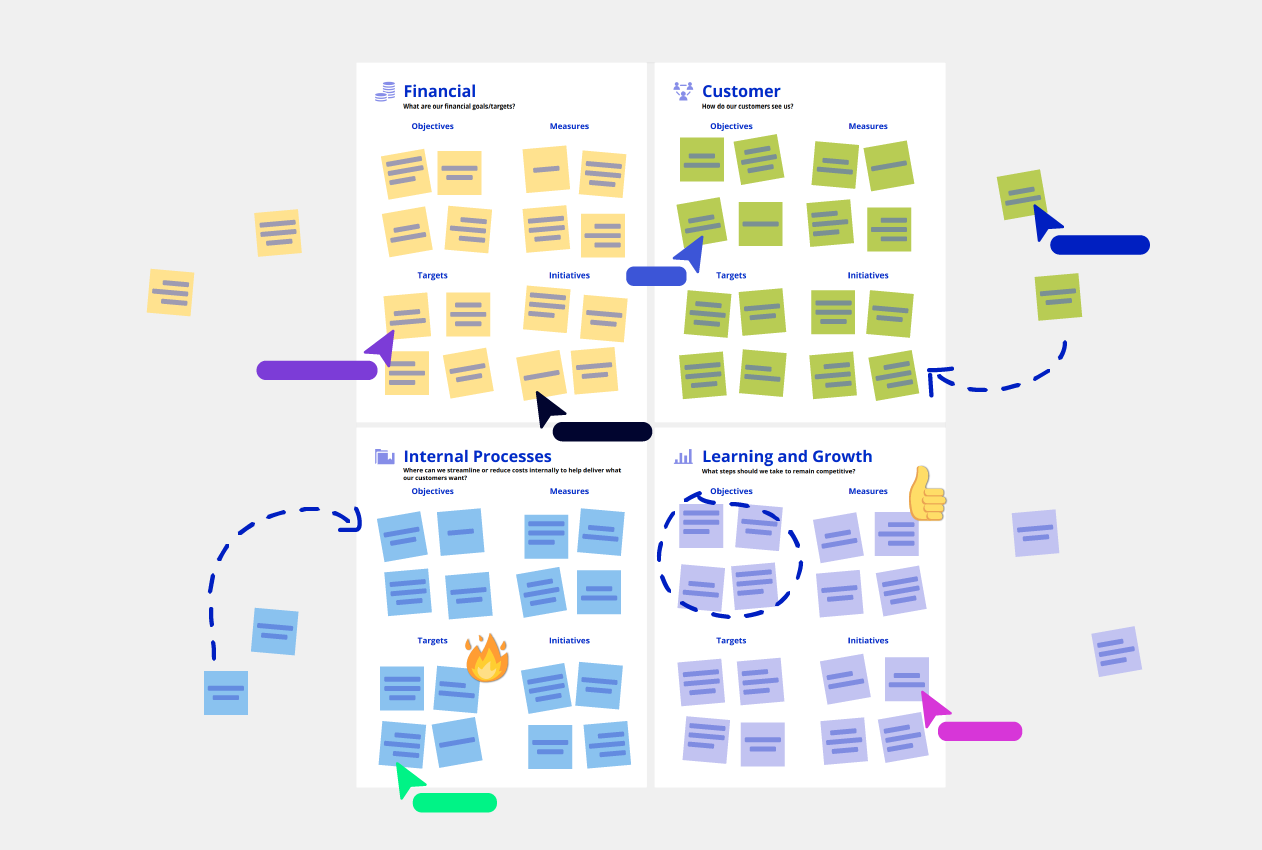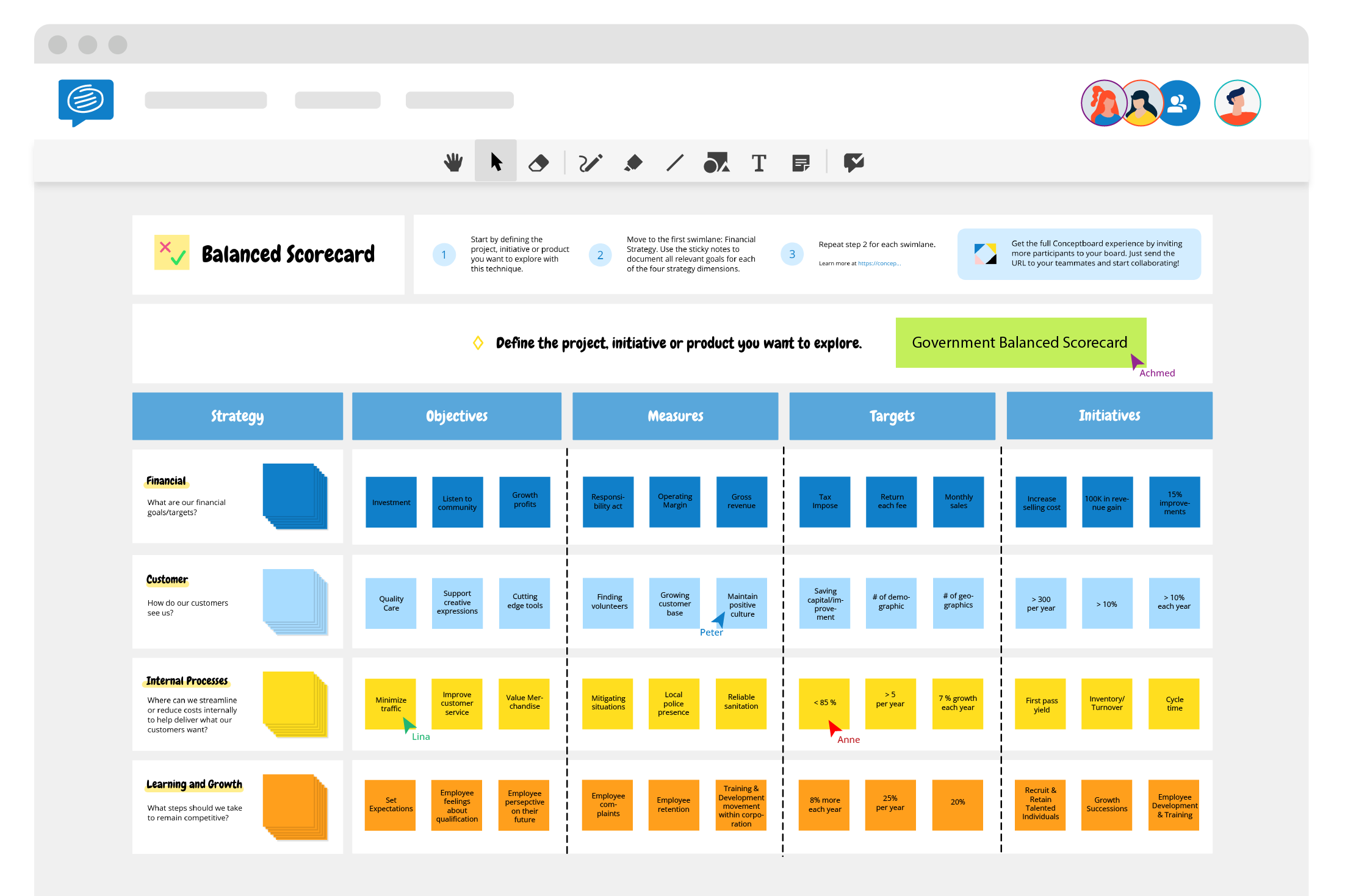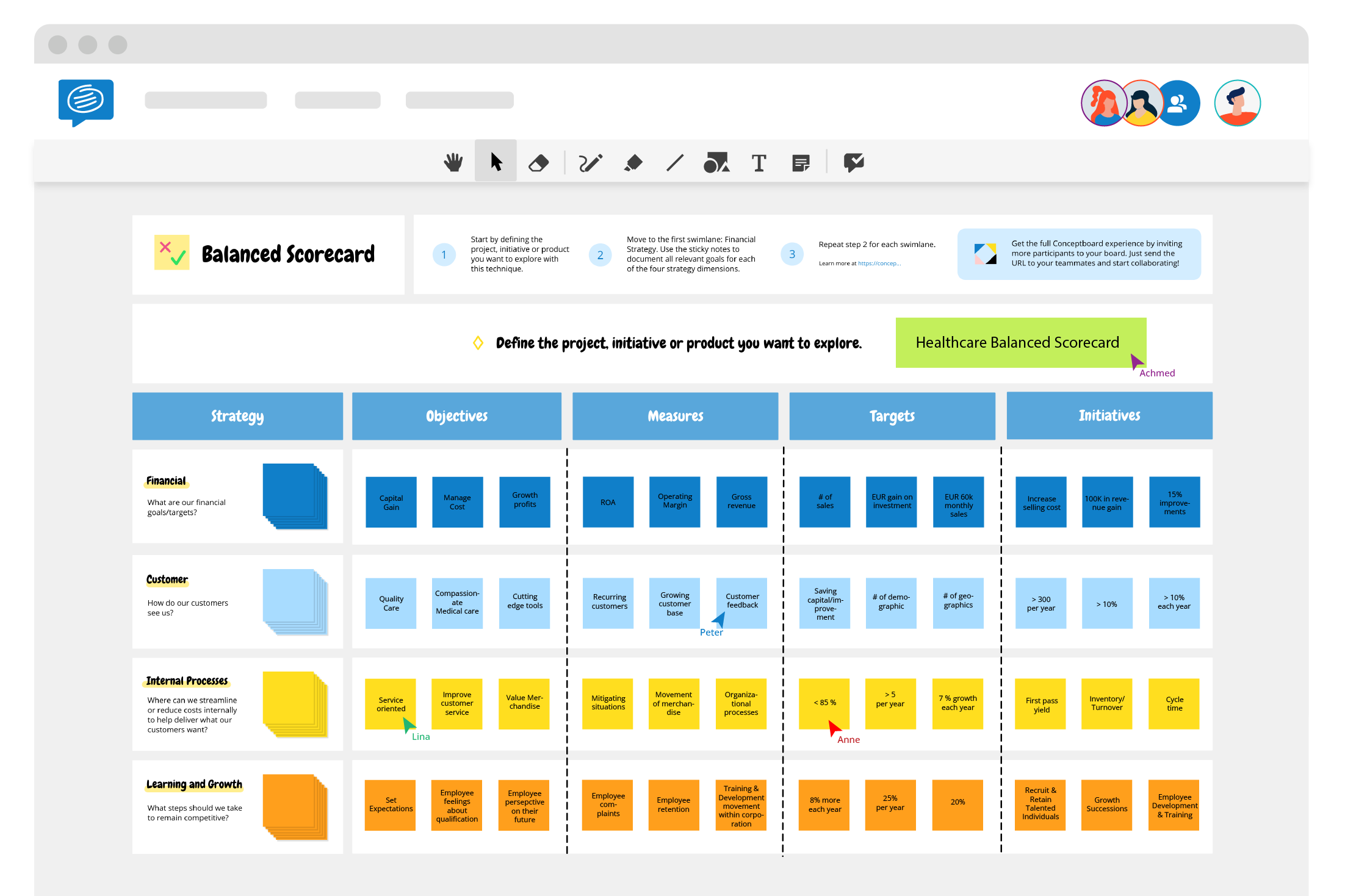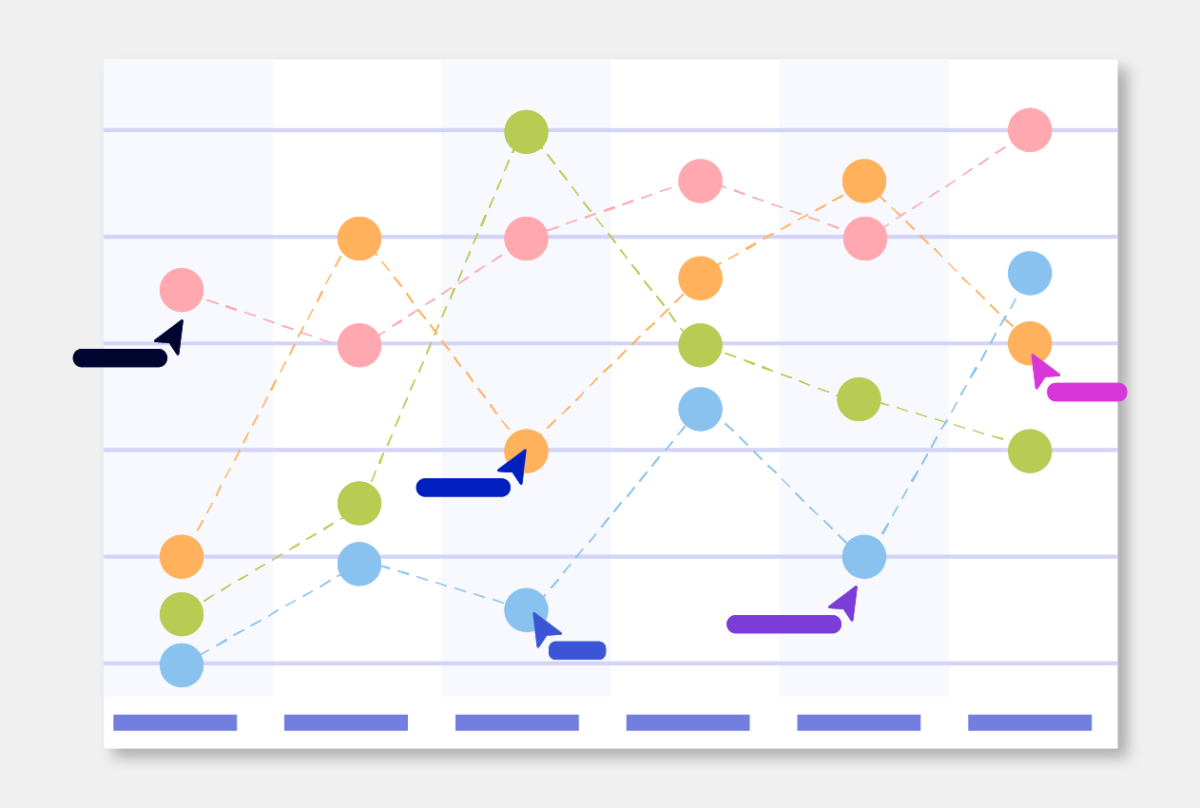What is a Balanced Scorecard template?
In business, it’s important to consider what success means from a range of different perspectives, not just the bottom line. This is where the Balanced Scorecard template (BSC) comes in. First created in the 1990s by authors Robert Kaplan and Robert Norton, this management tool aims to turn vision into strategic objectives, measures, targets, and KPIs.
Industries such as the car industry, healthcare, tech companies and education all make use of the Balanced Scorecard template to improve sales, define a strategic plan, launch a new product and measure overall performance, among many others.
Balanced Scorecard Approach
The Balanced Scorecard approach works by defining financial and non-financial objectives. These objectives are divided into four different perspectives. Most businesses incorporate KPIs(Key performance indicators) or businesses Metrics in their Balanced Scorecard model in order to better define success parameters. Some of these could be:
- Financial performance (revenues, ROI, earnings, ARPPU)
- Customer value performance (NPS, customer satisfaction measures)
- Internal business process performance (productivity rates, timeliness)
- Employee performance (morale, knowledge, turnover, use of best practices)
These four perspectives have a causal relationship with each other. Changes in Learning and Growth will drive changes in Internal Processes that will impact Customers and thus improve Financial results.
The first step is to define two or three strategic objectives for each area. Secondly, managers need to decide on a measurement of success, or in other words, how will the team know when they’ve reached their target KPIs? Then finally, list the initiatives that will get them there. It’s important that the strategy map shows how each objective relates to one another, so leaders can get a high-level view of their organization’s strategy at a glance, and team members can easily understand the part they play.
Let’s take a deeper look into the four perspectives and some example strategic objectives for each.
Four perspectives on a Balanced Scorecard template
1. Financial Perspective
While financial objectives are usually the easiest to define and measure, they are much more complex to actually fulfil. So, by linking financial objectives to objectives in the other key areas, we can define projects and make investments easier.
Example of strategic objectives:
- Increase sales revenue by 10%
- Sell 10,000 units this year
- Reduce internal costs by 8%
2. Customer Perspective
This section focuses on customer satisfaction by answering the question: How do our customers see us? You can only really answer this by asking your customers for their point of view. You may then be able to repackage or slightly shift your offering to align closer to your customers needs.
Example of strategic objectives:
- Become a trusted business partner
- Achieve 70 net promoter score NPS
- Acheive 50% client retention
3. Internal Business Process Perspective
The third perspective to look at is your internal processes. Where can you streamline or reduce costs internally to help deliver what our customers want? This is also the best area to focus on new and creative ideas to streamline processes for greater efficiency and effectiveness.
Example of strategic objectives:
- Attract 20% more research funding
- Introduce an induction program within 6 months
- Increase tender proposal rate by 50%
4. The Learning and Growth Perspective
Also called Organizational Capacity, this area measures how well employees perform, their skills and use of technology, training, company culture, and leadership. This area also includes infrastructure and technology. Here you should think about what steps you are taking to remain competitive.
Example of strategic objectives:
- Provide exceptional leadership
- Reduce staff turnover by 25% year on year
- Ensure all staff receive regular training
Balanced Scorecard Template

If you’re ready to get started with your very own Balanced Scorecard, simply use our free template, pre-formatted with each of the four key areas. By using an online template, you can easily track performance over time, and continually update the document. Plus, you can share it with team members and stakeholders with the click of a button. If you prefer to save it offline, simply export the completed template as a PDF document.
Balanced Scorecard examples
This is how a Balanced Scorecard may look within a bank using it for the purposes of investigating possible expansion while becoming more cost efficient.

Within the healthcare sector, this is an example of the types of objectives that a hospital might identify when they are trying to implement a new strategic strategy.

When leaders define the strategic priorities at each level, it makes it easier for employees to align their personal and team goals with the overarching goals of the business. This contributes to a more productive, trusting and driven workforce. Check out our other free templates designed to help you increase productivity such as the Team Canvas, OKR (Objectives, Key Results), and the Priority Matrix Template.




